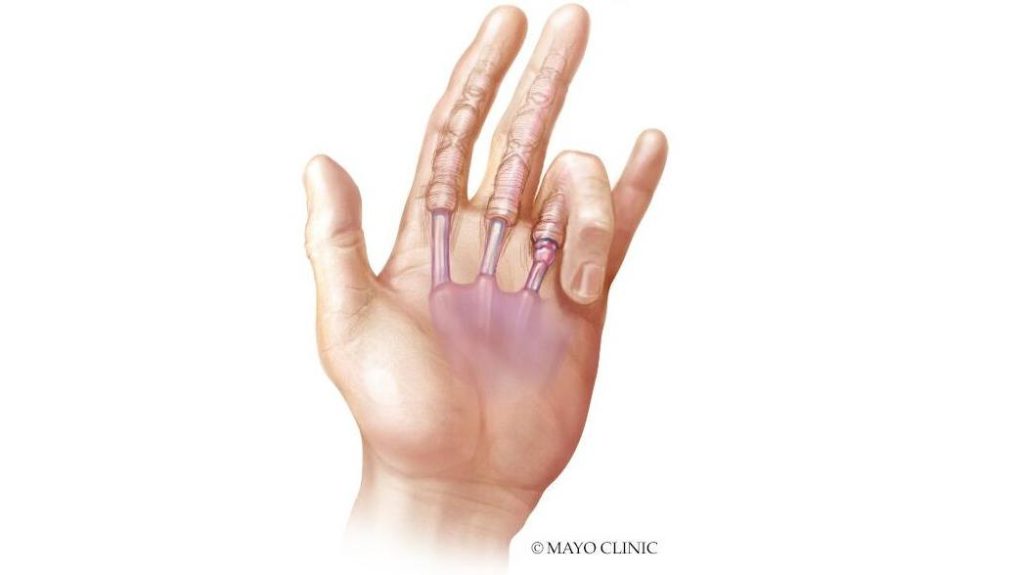-
Featured News
What triggers trigger finger?

Your hands are mechanical marvels, with pulleys — in the form of tendons — flexing and extending to open and close your fist, and straighten and bend your fingers. Each tendon is wrapped in a sheath that holds it in place.
The tendon sometimes can become irritated and swell, preventing it from sliding smoothly under the sheath. When that happens, your finger or thumb can get stuck in a bent or straight position in a condition called trigger finger.
Who can get trigger finger?
Typically, people 45 and older and those with diabetes or rheumatoid arthritis may be predisposed to trigger finger. It's rare in children. Usually, the tendon sheath becomes irritated due to overwork or injury, so people who do repetitive movements, heavy squeezing or lifting in their work can be prone to the condition. It can happen at any time and is more common than people realize.
How is it treated?
If you're experiencing mild symptoms, such as a small, tender lump at the base of a finger or your thumb on the palm side of your hand but can straighten or bend your finger without it locking, take an over-the-counter anti-inflammatory medication, such as ibuprofen, every day for two weeks. If your finger or thumb is locked, you may be able to use gentle pressure to force it straight or bent.
If your finger or thumb is locked, you're not able to force it straight or bent, and you're feeling catching or popping, the next level of treatment is a steroid injection to calm the irritation and swelling. Performed in the clinic, the injection is done in the palm of your hand. A cold spray is used to numb the area.
One injection may alleviate the problem, but it may recur. If so, another injection may be done after three months.
A less common, nonsurgical treatment is splinting. At night, you wear a splint to keep your affected finger or thumb straight.
Is surgery an option?
When over-the-counter medications and steroid injections aren't effective, you may need surgery, which is a quick, same-day procedure. A small incision is made in your palm, usually along the crease so a scar will be less noticeable. The surgeon probes under the skin to loosen the adhesion.
You can go home the same day, although for 10–14 days, you'll have limited use of your surgical hand while it heals. You'll be able to dress, drive, eat and do other light activities, making sure you don't lift anything heavier than 15 pounds.
After about 10 days to two weeks, you'll return to the clinic where the dressing and stitches will be removed. Most people can go back to work without any restrictions and seldom need follow-up physical therapy.
Can trigger finger be prevented?
Awareness is the first line of prevention. If you notice a small, tender lump at the base of your thumb or finger or experience catching or popping, you may want to consult with an orthopedic health care professional.
Sara Snyder is a nurse practitioner in Orthopedics in Fairmont, Minnesota.







